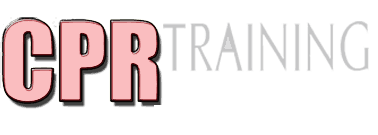When performing CPR, it is important to have at hand Basic CPR guidelines that will act as a reference point when performing this procedure. Below are the basics as recommended by the American Heart Association (AHA).
Category: infants below 1 year
– When do you call for emergency help?
Perform infant CPR for a couple of minutes and then call 911 for medical emergency help. You will then get an automated external defibrillator (AED), a small device that sets the heart’s rhythm in place by sending adequate shocks through the body.
– What if the infant is experiencing labored breathing?
Put two fingers on the breastbone. The nipple line is located just above the breastbone, so it should not be hard to figure out.
– Basic CPR guidelines for administering CPR on an infant
Use two fingers on the spot described above. You should be able to manage at least 100 compressions every 60 seconds, which typically adds up to about 1 or 2 compressions per second. When carrying out the compressions, push the baby’s chest at least 4cm in.
If you have undergone CPR training, how should you incorporate rescue breaths when performing compressions? The cycle for infant CPR ought to be 30 compressions and 2 rescue breaths to be repeated until normal breathing is restored. Rescue breaths are, in fact, very important for infants.
Category: young children to adolescents
– When do you call for emergency help?
Perform CPR for 2 minutes before you make a call for emergency, medical help. Use an AED if there is one available.
– What if the child is experiencing difficulty breathing?
Put two fingers at the precise spot where the ribs join. Place the heel of your free hand on top of the fingers on the breastbone.
– Basic CPR guidelines for administering CPR on young children to adolescents
Use the heel of your hand to give chest compressions. Make this at least 100 compressions for every minute of the life-saving technique. While at it, press the chest in about two inches. What about rescue breaths? For individuals who have undergone CPR training, it is important to carry out the 30/2 cycle. This makes reference to 30 compressions provided alongside 2 rescue breaths. This is done until the child starts to breath normally or until medical help arrives.
Category: adults
– When do you call for emergency help?
Call for help prior to starting any CPR on the adult. Once this is done, perform CPR and use an AED if there is one available.
– What if the adult is experiencing difficulty breathing?
Put two fingers at the specific point where the ribs join. Take the heel of your free hand and place it above the fingers.
– Basic CPR guidelines for administering CPR on adults
Use the heel of your hand and place your free hand above it before interlacing your fingers. Give at least 100 chest compressions every minute by pressing in the chest at least two inches in. if you want to incorporate rescue breaths, give 30 compressions alongside 2 rescue breaths until normal breathing resumes.
